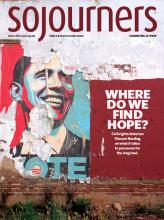SEVERAL YEARS AGO, when I first began writing The New Jim Crow: Mass Incarceration in the Age of Colorblindness, I was taking a leap of faith—trusting that people of faith and conscience would have the same awakening I did, if they had access to the history and facts about the drug war and the myriad laws authorizing discrimination against people released from prison. I trusted people would begin to see the connections between slavery, Jim Crow, and the rise of mass incarceration in America. I clung to the belief that people could and would rise to the challenge presented by this paradoxical moment in U.S. history—a time when there are more African-American men under correctional control than were enslaved in 1850, and yet a black man is president.
I prayed, literally down on my knees, that if I could just finish the book, a seed would be planted next to the many other seeds of hope and justice; that people would begin to water these seeds; and that a vibrant, multi-ethnic movement for racial and social justice would emerge—a movement that would end not only mass incarceration but the cycle of caste creation in America.
Many people, including a few of my closest mentors, called this foolishness. I was told I was “ruining my career” as a law professor, that I should stick to writing traditional law review articles and not marginalize myself as “some kind of radical.”
I must admit that, after a while, I tried to quit writing the book. Writing it was so much more difficult than I had imagined; I started to think it wasn’t worth the effort. But the Spirit was working in my life in ways that I did not fully understand.
Read the Full Article
